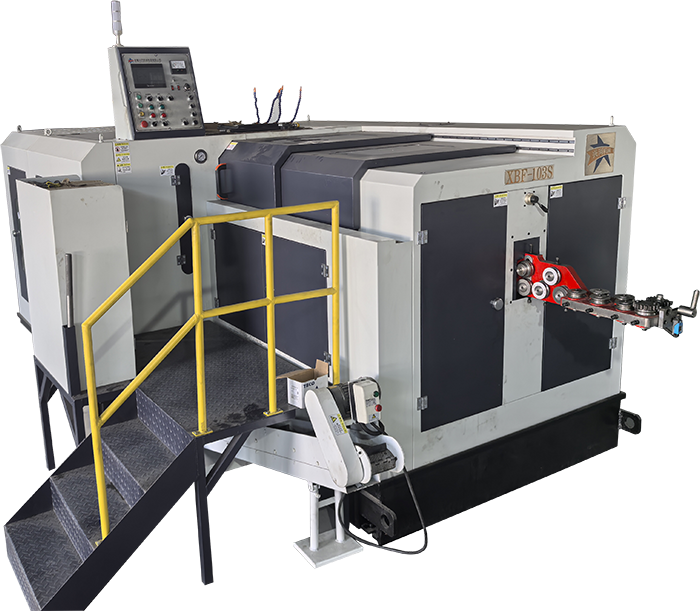Cold forming machines play a pivotal role in modern manufacturing, offering unmatched efficiency and precision in producing metal components without the need for heat. Particularly in the fastener and hardware industries, cold forming is a preferred method for high-volume, high-strength part production.
In this article, we’ll explore the main types of cold formers, common applications across industries, the core benefits of this technology, and how to choose the right machine for your specific needs.

Multi-station bolt former machines are specifically designed for producing standardized fasteners such as bolts, screws, and rivets. The number of stations (or dies) corresponds to the complexity and steps required in shaping the part.
3-Station Bolt Formers are ideal for simple, short bolts or screws requiring fewer forming stages.
4-Station Bolt Formers offer an additional forming stage, allowing for more complex head or shank designs while maintaining high production speeds.
Both types are known for their fast cycle times, high tool life, and excellent dimensional consistency.
Special-shaped part forming machines are designed for more intricate, non-standard components used in sectors such as automotive, aerospace, and electronics.
6-Station Part Formers handle complex geometries that require multiple deformation stages like extruding, trimming, and heading.
7-Station Part Formers further increase flexibility, ideal for deep forming and precise multi-step shaping.
These machines can produce near-net shape parts, reducing the need for secondary machining and improving material utilization.
Cold forming is extensively used in producing high-strength, fatigue-resistant fasteners like wheel bolts, engine pins, and connecting rods. Its ability to retain grain flow enhances mechanical properties essential for safety-critical parts.
Anchor bolts, threaded rods, and other load-bearing elements benefit from cold forming due to its superior strength-to-weight ratio and consistent thread formation, ensuring performance under structural stress.
Cold forming is also used to produce components such as screwdriver bits, sockets, and hinges. These parts demand durability and precision—qualities that cold forming delivers at scale.
Material Efficiency: Cold forming produces near-net shapes, minimizing material waste and scrap.
High Production Speed: Capable of producing hundreds of parts per minute, it supports high-volume operations.
Improved Mechanical Properties: Grain flow remains uninterrupted, resulting in stronger and more fatigue-resistant parts.
Dimensional Accuracy: Tight tolerances are maintained without post-processing.
Lower Energy Costs: Unlike hot forming, cold forming eliminates the need for high-temperature heating systems.
When selecting a cold forming machine, consider the following criteria:
Part Complexity: More intricate designs may require 6 or 7 stations.
Material Type & Diameter: Ensure the machine can handle your raw material specifications.
Production Volume: Match cycle time and output rate to your factory needs.
Tooling and Maintenance: Look for machines that offer easy die changeover and long tool life.
Automation Compatibility: Consider whether feeding, lubrication, or sorting systems can be automated.
Collaborating with an experienced manufacturer or supplier can help you determine the optimal configuration for your production line.
Cold forming machines represent a smart investment for manufacturers looking to improve efficiency, product quality, and material usage. Whether producing standard bolts or complex precision components, choosing the right type of cold former—bolt former or part former—can dramatically impact production output and profitability.
By understanding the types, uses, and advantages of these machines, you can make informed decisions and stay ahead in today’s competitive manufacturing environment.